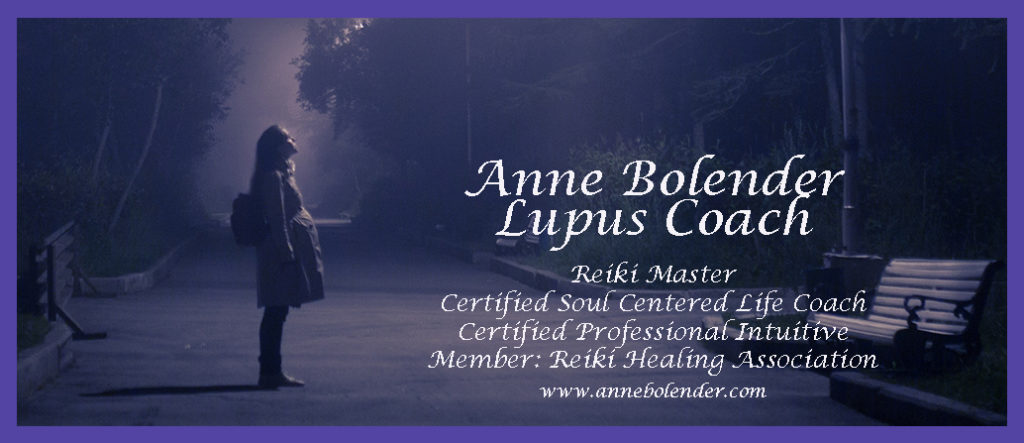 In my last post, I wrote about the importance for people with Lupus in maintaining a positive mindset. If you missed that blog post, you can read it by clicking here. I do admit that creating or maintaining a positive mindset while you are in the midst of a downward spiral into a negative mindset is very challenging.
In my last post, I wrote about the importance for people with Lupus in maintaining a positive mindset. If you missed that blog post, you can read it by clicking here. I do admit that creating or maintaining a positive mindset while you are in the midst of a downward spiral into a negative mindset is very challenging.
In fact, if you do not have a plan in place regarding how you want to manage your mindset, trying to figure it all out while you are in a negative mindset might just add to the stress and frustration that you are already feeling, making change even more difficult.
The intention of this blog post is to provide you with six techniques that you could use to help you create or maintain a positive mindset, even when you are experiencing negative physical, environmental, or mental challenges.
1) Journaling. There are several different types of journaling that can improve your mindset.
a) Basic Daily Journaling. With this type of Journaling, you record your daily thoughts and feelings, allowing yourself to be completely open about what is happening and what you are thinking and feeling. Sometimes simply writing your thoughts down on paper can help you work through them, resulting in you feeling better. When you do this type of Journaling, you can use it to identify the words you are using to express you feelings (words are very powerful entities that can impact your mindset. This topic will be discussed in my next blog post), if there is a specific issue that is challenging your attitude, or if there is a specific pattern to your thoughts (specific days, or times, or activities, etc., that you find particularly challenging or difficult to deal with).
b) Bullet Journaling. This is a very creative form of Journaling. In fact, many people are approaching Bullet Journaling as a hobby. Brightly coloured pens and pencils are used to create doodles, drawings, and lists and challenge the users creativity – but you really do not need any special artistic talent to get really into Bullet Journaling. Bullet Journals can be used to tract anything – daily thoughts, the physical impact of Lupus, steps you are taking to take back control of your life (as best as is possible), challenges you have faced and how you overcame them, plans and intentions for your future, etc.
c) Act As If Journaling. This is similar to Daily Journaling – but with a twist. You basically journal your daily life as if you no longer needed to face your current biggest challenge. So you are journaling what you life would be like if the pain you are currently feeling no longer bothered you, or if you felt good about yourself, or what your life would look like if you were actively dieting and exercising to control your symptoms (what would your diet consist of?; what exercises would you be doing?), etc.
2) Self-Care, Self-Love. In order to really take care of yourself and live with a positive mindset, you really need to love yourself. Not the way you were, but how you are right now – pain, nausea, thinning hair, red rashed cheeks, fatigue, the whole package. There is often a feeling of  unworthiness that comes with a chronic illness. Of feeling like you should soldier on tending to others regardless of how you feel. All that this ends up doing is making yourself physically worse than you need to be. Now, I’m not saying that you should spend a day at the spa or getting a massage unless those are activities that make you happy. Instead, find activities that you really love doing and that aren’t going to put too much stress on you. Have a bubble bath; spend some time alone reading; spend time on a hobby; watch a movie; listen to music; be creative; sleep; etc. Pursuing any activity that excites and energizes you, that makes you lose track of time, that’s the best self-care activity for you.
unworthiness that comes with a chronic illness. Of feeling like you should soldier on tending to others regardless of how you feel. All that this ends up doing is making yourself physically worse than you need to be. Now, I’m not saying that you should spend a day at the spa or getting a massage unless those are activities that make you happy. Instead, find activities that you really love doing and that aren’t going to put too much stress on you. Have a bubble bath; spend some time alone reading; spend time on a hobby; watch a movie; listen to music; be creative; sleep; etc. Pursuing any activity that excites and energizes you, that makes you lose track of time, that’s the best self-care activity for you.
3) Core Values. There is a saying by Lao Tzu that I absolutely love: “At the centre of your being, you know who you are and you know what you want.” This is how I define you true core values. These are not the social, political, cultural or religious values that we all grew up with. These are very personal values that identify the activities that energize and excite you. These concepts are what you look for when you are looking for activities or opportunities that feel right for you. Each of us has roughly five or six of these core values, and when we align our daily activities, our jobs, our self-care, our hobbies, etc, with these core values – well, that’s when magic begins to appear in our lives. I am planning to write a blog post in the near future that discusses core values more deeply and will include worksheets that will help you identify and implement your personal core values. So watch this space :-
4) Hobbies. Enjoyable hobbies are not only an excellent form of self-care, but engaging with the creativity that most hobbies require is what makes hobbies a fantastic way to begin shifting your mindset from a negative one to a positive one. Creativity engage the right side of your brain – the side that is also identified as being more geared towards engaging your intuition rather than  promoting more logical or analytical thinking. So creative activities takes you out of questioning yourself (Why am I feeling this way? When will this stop? Why can’t my doctor help me feel better?) and more into exploring creative options for yourself (Well, maybe if I tried this, I could get that?) Plus, creative hobbies can be easy on you physically, so you feel like you are actually doing something; completing a creative project provides you with feeling of accomplishment, satisfaction, and success which all contribute to a positive mindset, and creative hobbies can provide you with a bit of an escape, some time to focus on something outside of yourself (particularly when that hobby requires you to focus and concentrate on what you are doing). The focus and concentration that a lot of creative hobbies require (including activities like mind puzzles, word games, crossword puzzles, sudoku, etc) can also help lessen brain fog.
promoting more logical or analytical thinking. So creative activities takes you out of questioning yourself (Why am I feeling this way? When will this stop? Why can’t my doctor help me feel better?) and more into exploring creative options for yourself (Well, maybe if I tried this, I could get that?) Plus, creative hobbies can be easy on you physically, so you feel like you are actually doing something; completing a creative project provides you with feeling of accomplishment, satisfaction, and success which all contribute to a positive mindset, and creative hobbies can provide you with a bit of an escape, some time to focus on something outside of yourself (particularly when that hobby requires you to focus and concentrate on what you are doing). The focus and concentration that a lot of creative hobbies require (including activities like mind puzzles, word games, crossword puzzles, sudoku, etc) can also help lessen brain fog.
5) Clean Pain versus Dirty Pain. Byron Katie, a popular self-help author and coach, has a concept she calls Clean Pain versus Dirty Pain (and ‘pain’ can be either physical pain or psychological pain). Clean Pain is based on what is happening in the red-hot minute of the event (an insulting comment that is made; a new diagnosis of a new autoimmune illness that you need to cope with, etc). This pain is real, it’s immediate, it’s something we feel deeply in the moment that it is happening. Dirty pain, on the other hand, is the pain that we feel when we remember the original event. The event is no longer happening, it is something that happened in the past. Unfortunately, our brains cannot tell the difference between reality (what is happening now) and an emotionally charged memory or visualization (the mental image doesn’t even have to have actually happened). Every time we remember that painful event and feel those emotions, the more our brain focuses on that event and the more it will focus on finding similar events as they happen to us, and the more it will embed that event and those emotions into our mindset. This is why it is important to feel what you are feeling at the time the event happens – and then let it go!
6) Four Questions and the Turnaround. Byron Katie has another technique that is very effective at improving mindsets. Whenever you have a negative thought, feeling, or belief, ask yourself these four questions:
a) Is this true? Is what I am saying, thinking, feeling really true?
b) Can I absolutely know that it’s true? Can I think of examples of times or events in my life where this was absolutely true? Can I thinks of times or events in my life where what I am saying, thinking, feeling wasn’t true?
c) What happens, how do you react or feel when you believe that thought?
d) Who would you be, what would your life be like, without that thought?
The final step in this technique is to turn the thought around. Find three genuine examples of how the turnaround is true in your life, basically, you are looking for examples from your life where the negative thought you are experiencing is not true. So times when you felt great (even with Lupus), or when you weren’t in so much pain, or when you felt beautiful, etc.
By practicing any or all of these six techniques, you can begin changing a negative mindset where everything you do, feel, experience is interpreted as negatives, into a more positive mindset, where, regardless of what you are feeling or experiencing, you can still find something positive to think, say, or feel about it.
And remember that you are not alone. If you would like to discuss any of these techniques, feel free to schedule a free 30 Minute coaching session with me. You can schedule your session by clicking here!


